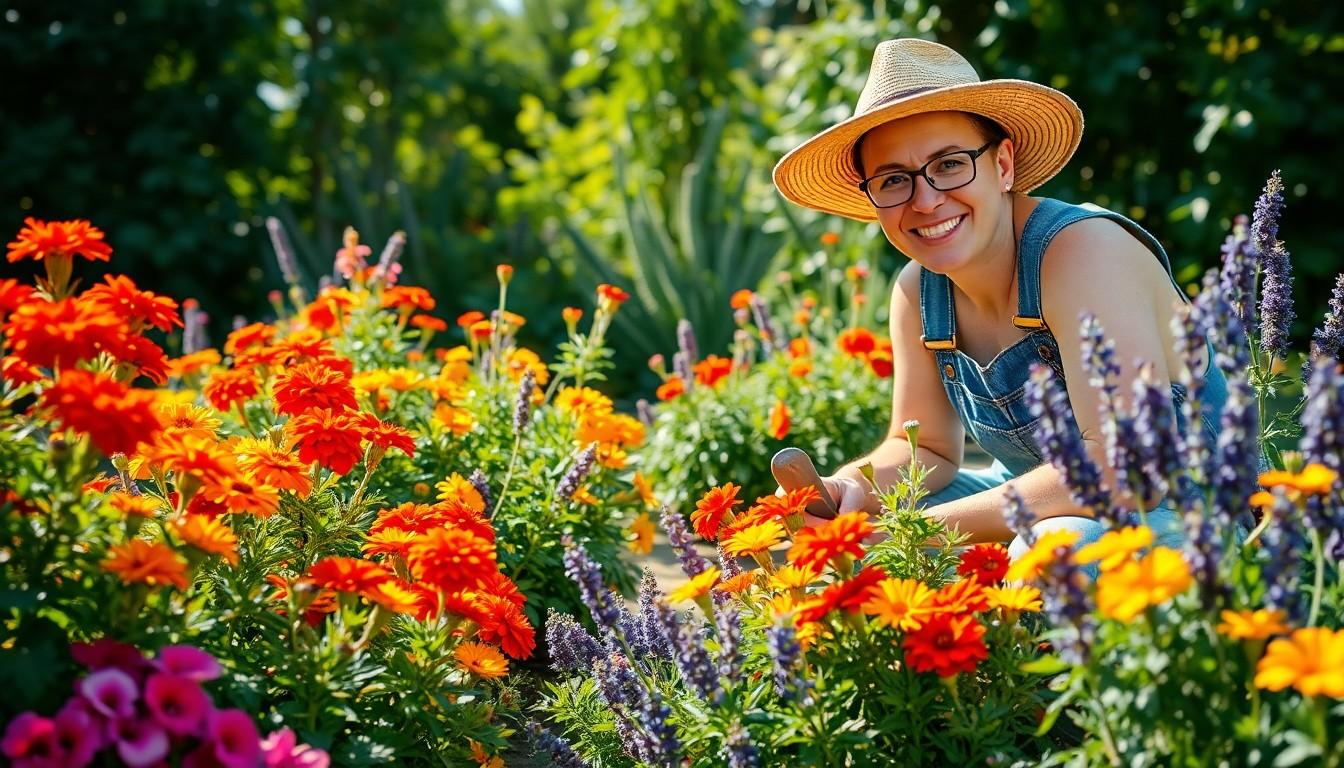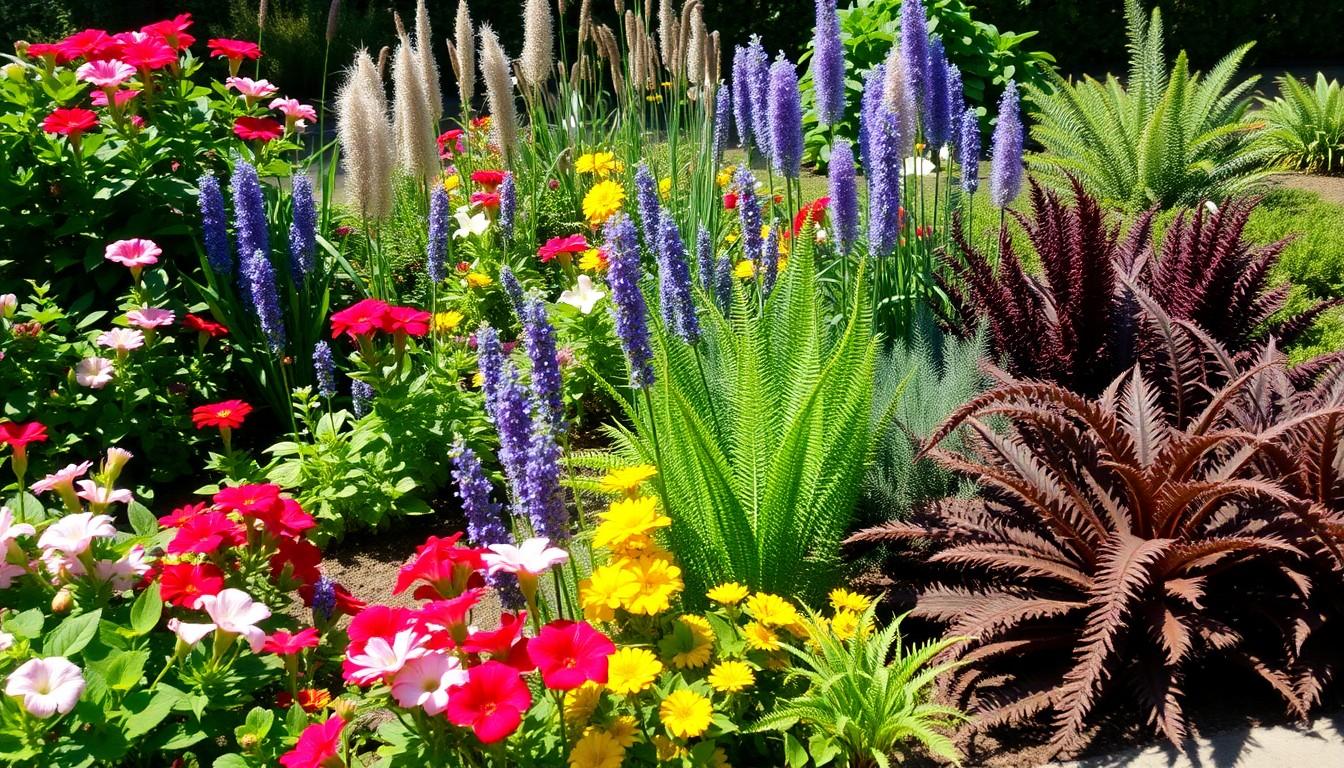Phone:
(701)814-6992
Physical address:
6296 Donnelly Plaza
Ratkeville, Bahamas.

Imagine stepping into your backyard and being greeted by a vibrant symphony of colors and fragrances. Outdoor plants and flowers aren’t just decoration; they’re the life of the party that brings joy to every corner of your garden. With the right selection, they can transform a dull space into a lively oasis where butterflies dance and bees buzz in harmony.
But let’s be honest—keeping plants alive is a bit like trying to train a cat. It takes patience, knowledge, and maybe a few treats (for both the plants and yourself). From low-maintenance succulents that thrive on neglect to flamboyant blooms that demand attention, there’s a perfect plant for every personality. Dive into the world of outdoor greenery and discover how these botanical beauties can elevate your outdoor space while putting a smile on your face.
Exploring various types of outdoor plants and flowers enriches garden aesthetics and meets diverse gardening needs. Understanding these categories facilitates effective landscaping choices.
Annuals complete their life cycle in one growing season. These plants thrive in various colors, adding vibrant touches to gardens. Popular options include marigolds, petunias, and zinnias. Gardeners appreciate annuals for their ability to bloom continuously until frost. Regular replanting each year ensures a fresh look and new varieties can be introduced.
Perennials live for multiple seasons, returning each year. They require less maintenance compared to annuals, making them an ideal choice for busy gardeners. Examples include roses, lavender, and hostas. These plants contribute to garden stability while offering seasonal blooms. With proper care, perennials can thrive for years in the same spot, creating lasting beauty.
Biennials take two years to complete their life cycle. In the first year, these plants develop foliage and establish roots. Notable options include foxglove, hollyhock, and evening primrose. Blooms typically appear in the second year, adding interest to gardens. Biennials are excellent for filling gaps and enhancing seasonal transitions within landscapes.

Choosing the right outdoor plants enhances garden aesthetics and functionality. Discover various options based on sunlight and shade preferences that suit diverse garden environments.
Sun-loving plants thrive in bright sunlight, ensuring vibrant blooms and lush foliage. Geraniums stand out with their colorful blossoms and resilience, making them perfect for sunny spots. Zinnias offer a wide array of colors while attracting butterflies, transforming any garden into a lively ecosystem. Lavender emits a calming scent and attracts pollinators, adding beauty and practicality. Marigolds provide bursts of color, repel pests, and work well in companion planting. Finally, ornamental grasses enhance texture and movement, creating a captivating visual display.
Shade-tolerant plants excel in areas with limited sunlight, bringing life to darker corners of gardens. Hostas feature lush leaves, thriving in low light while providing stunning variations in color and texture. Ferns naturally flourish in shaded areas, adding foliage diversity and elegance. Astilbes bloom vividly with feathery plumes, brightening up shady spots. Heucheras offer colorful foliage throughout the seasons, creating visual interest year-round. Additionally, Bleeding hearts provide unique, heart-shaped flowers that add charm and intrigue to shaded gardens.
Caring for outdoor plants and flowers requires attention to detail and a solid understanding of their specific needs. The following guidelines enhance plant health and promote vibrant growth.
Establishing a consistent watering routine is crucial. During the growing season, most outdoor plants require watering 1 to 2 times per week, depending on climate and soil conditions. Morning is the best time to water, as it reduces evaporation and allows plants to absorb moisture before the heat of the day. For plants in containers, check the soil daily for moisture. Signs of underwatering include wilting leaves and dry soil, while overwatering can cause root rot and yellowing leaves. Implementing a drip irrigation system can also provide efficient and targeted hydration.
Selecting the right soil mix supports healthy growth. Outdoor plants thrive in well-draining soil rich in organic matter, such as compost. Incorporating a balanced fertilizer during the growing season enhances nutrient availability. Applying slow-release fertilizers every 6 to 8 weeks promotes steady nutrient uptake. Conducting a soil test every couple of years provides insight into pH and nutrient levels, allowing gardeners to adjust their fertilization strategies. Ensuring proper drainage in beds and pots prevents waterlogging and encourages robust root development.
Regular pruning fosters a fuller, healthier garden. Deadheading spent blooms encourages more flowering and keeps plants looking tidy. For most plants, pruning occurs in spring before new growth begins. Focus on removing dead, damaged, or crossing branches to improve airflow. Monitoring for pests and diseases is vital; early detection prevents widespread damage and promotes plant recovery. Mulching around plants helps retain moisture, control weeds, and enhance soil quality. Keeping up with these maintenance tasks results in a thriving outdoor space.
Creating an inviting outdoor environment involves thoughtful planning and design. Consider how different plants interact with one another and the overall aesthetic they bring to the space.
Combine complementary plants for visual appeal. Use a bold annual like petunia next to a sturdy perennial such as lavender. Grouping plants with varied heights adds dimension, with taller plants at the back and shorter ones at the front. Incorporating foliage plants alongside flowering varieties creates extra interest. Look at texture variations to enhance visual contrast. Layer plants in clusters to create a natural look that draws the eye.
Planning for seasonal changes influences outdoor design. Select annuals for vibrant color during the summer months and perennials for reliable blooms year-round. Match flowering times to ensure continuous blooms throughout the season. Consider foliage that maintains its appeal even in winter, like evergreens. Seasonal color shifts keep the landscape dynamic, providing excitement through changing blooms. Always assess local climate conditions to ensure plant selection thrives throughout the year.
Transforming an outdoor space with plants and flowers can be a rewarding experience. With the right choices and care, anyone can create a stunning environment that reflects their style and personality. Understanding the different categories of plants and their specific needs is essential for success.
By selecting the right plants for sunlight and shade conditions, gardeners can ensure their outdoor areas thrive. Practical care tips and thoughtful design will enhance the beauty and functionality of any garden. Embracing the journey of gardening not only enriches personal spaces but also fosters a deeper connection with nature.